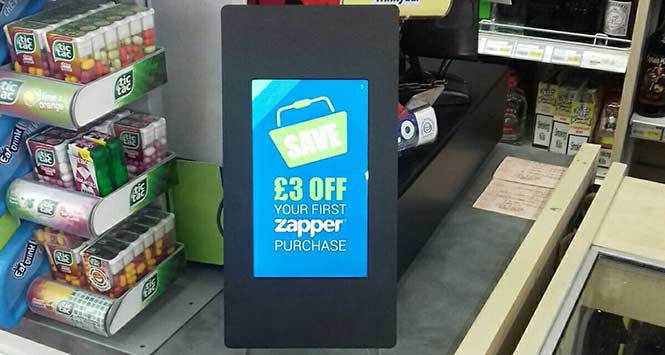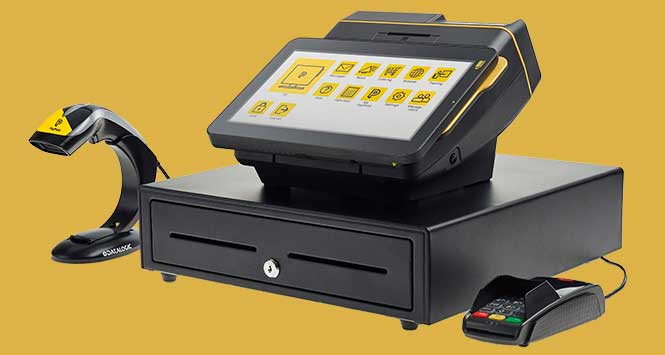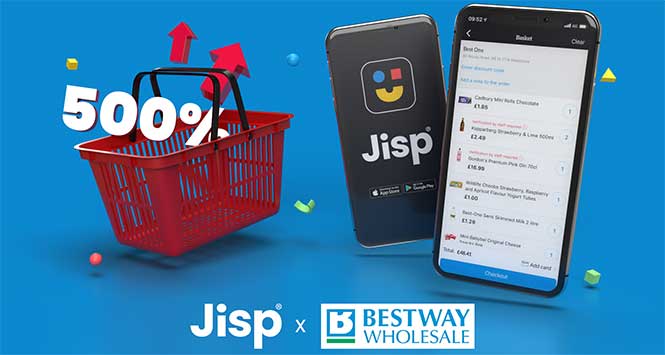The role of technology in local retailing is getting ever wider as more and more solutions begin to appear. SLR takes a look at some of the most useful tech currently available to retailers.
by Iain Hoey
There’s no question that the presence of technology in local retailing is growing exponentially, helping retailers in every aspect of their work both behind the scenes and, increasingly, front of house. Today’s tech is helping influence and speed up buying decisions and processes as well as allowing retailers to better understand how their shoppers make transactions – and then turning this knowledge into sales.
All convenience retailing technology can generally speaking be found of a broad spectrum with ‘passive’ at one end and ‘active’ on the other. Passive technologies are all about capitalising on the shopper who is already in the store. Active technologies help spur the consumer into making a decision such as visiting a particular store or purchasing a particular deal. In reality, most tech falls somewhere in between, and much of the tech is built on a platform of data. Modern technologies often allow for the seamless capture, storage and analysis of data, helping to drive better decision-making for the future. A digital virtuous cycle and one more and more easily available to local retailers.
At its heart, local retailing is an industry driven by convenience. Shoppers want to come in, find what they’re looking for, pay, and leave – and there is an increasing number of technologies that retailers can use to help shoppers achieve just that, boosting sales and basket spend, often without the shopper even realising.
EPoS
The longest standing and most familiar in-store technology is of course EPoS. A decade or two ago there were still many retailers unconvinced of the merits of EPoS. These days the notion of running a store efficiently without an EPoS system is pretty much unthinkable. There is no better way of transacting sales, while at the same time capturing critically important business information. There are many good systems on the market each with their own strengths and weaknesses – but buying one can be a tricky and difficult business.
Retailers should carefully consider their options when choosing a service provider, according to Stephen Burnett, Managing Director of EPoS supplier The Retail Data Partnership. “Competitive pressure is not going away,” he warns. “It’s only going to increase. Retailers need to take a good hard look at the partners they want to work with. Not all of them have the retailers’ best interests at heart. Don’t get locked into long term contracts with providers of services that are in decline. Look for new and innovative solutions that will really work with you to build your business.”
In particular, it’s worth considering how well the system you’re looking at deals with day to day transactioning. How well can you manage issues at the tillpoint to minimise disruption and speed things up for the customer? How easy and intuitive is the system to use? What sort of training is provided for your staff, and what is the ongoing support package like? How easy is it to add goods-in and how does the system deal with stock handling? What sort of reports can the system run and how easy are they to understand and manage?
The key is to take time and really get under the skin of any system before you sign on the dotted line.
Digital signage
One trend which is developing, although not for the first time, is digital signage. Many companies have had a go at providing fit-for-purpose solutions for the local retailing industry over the years but none have really stuck. The latest company that seems to be making good headway and gaining traction in stores across Scotland – including in our own Woodlands Local – is Hi Street Digital. Bright, attractive digital signage of any kind is going to drive awareness and, directly or indirectly, sales.
In the modern world, consumers are used to digital screens and see them many times every day so it makes sense to bring this into the convenience retailing environment to drive awareness of products and deals as well as simply adding a little colour to the store. Hi Street’s system has the added benefit of being customisable to your own store and promotional package (by symbol group) and is remotely manageable.
Heat mapping
Knowing your shoppers and their habits is one of the fundamental principles of being a local retailer, and technology can help enhance the process and drive loyalty, thanks to the likes of ‘heatmapping’, once the preserve of the major multiples but increasingly accessible for convenience stores.
VCA’s heatmapping technology uses multiple cameras to accurately map customer journeys in-store, showing the areas which see the most dwell time, and giving real time updates to retailers. Footfall analysis is made simple with the VCA’s analytics, which can automatically collect statistics on customer behaviour, enabling retailers to make informed business decisions.
The system uses multiple overlapping detection lines and zones ensure only specific activity is recorded. It has a real time, remote and easy access dashboard. This captures data which is displayed via simple charts, heat maps and reports which allow individual store managers or on-the-road regional managers to make informed decisions, whilst enabling head office marketing and merchandising personnel to compare at a glance, business intelligence from high and low performing stores without leaving their desks.
VCA analytics can also analyse and manage queuing times and queue lengths which can help the efficient deployment of staff, whilst reducing the risk of customer frustration and walk-offs. Data captured by VCA analytics can provide an insight into how long customers have to queue to pay for items, as well as how much time customers spend in particular aisles, all of which retailers can use to effectively merchandise and run their store.
Contactless
Contactless payment technology falls somewhere in the middle of passive and active, depending on what method is used, but is increasingly ubiquitious in local retailing outlets. On the one hand, there are simple card readers which require shoppers to tap their card to complete the transaction.
The technology has been on the market for almost 10 years, but it skyrocketed in 2016, leaping from £7.75bn of spend to £25.2bn in the UK. As the technology becomes more commonplace, consumers are likely to expect its presence, with research from Payments UK indicating that by 2018 a third of card payments will be contactless.
“Having a range of different payment options available to suit customers’ preferences will make a store feel like a more convenient place to shop, encouraging customers to choose to buy more,” says Steve O’Neill, Marketing Director at PayPoint.
The upper limit for contactless payment transactions is currently £30, and average convenience retailer basket spend is safely below this figure, offering contactless payment options would be a sensible piece of tech to have installed.
Of course, it’s not just cards that boast contactless spending, with giants like Apple, Android and most recently Samsung Pay also taking their share of the tap-and-go transactions. With fingerprint-based technology, these solutions are arguably even safer than the simple card-tapping solution and should grow in future.
Consumers may begin choosing their contactless payment method more carefully however as contactless card payment fraud more than doubled to £7m in the UK in 2016.
Loyalty
Where contactless becomes ‘active’ is with the likes of apps like Zapper. Described by the company as a ‘data insight platform’, Zapper is a next generation app-based ‘tap and go’ payment solution that delivers loyalty, vouchering and discount benefits for both retailers and shoppers. Shoppers download the app and can use it pay at the till, as well as redeeming vouchers – and the system captures all transactional data into the bargain, providing insight for future activity. It sounds nifty, and with widespread success in South Africa proves it can become a fixture in retail.
“With the need to provide real value to attract and retain customers, more and more stores are adopting mobile payments, loyalty and vouchering technology,” says Gerry Hooper, CEO at Zapper UK. “It’s essential for them to digitise these processes to increase the speed of payment at the till and engage with the consumer, not only in store but also at other times of their day too.
“Convenience stores are small enough to be agile and move quickly,” Hooper continues. “They need to take advantage of advancing technology. This technology can be used to communicate with customers and is more measureable. Stores can analyse their reports for a campaign and benchmark their findings. Plus, with digitised promotions, they can see what offers or messages drives which habits and purchases.”
A recent trial conducted in seven Nisa stores in and around Peterborough delivered encouraging results. Over 850 unique customers across the stores used Zapper for more than 4,800 transactions with a 41% redemption rate across all vouchers issued to shoppers via the system. Zapper claim a 63% increase in weekly visits by loyal shoppers against the industry average and a 35% increase in basket spend with repeat visits by regular shops reaching 4.19 visits per week.
Couponing
Zapper’s is not the not the only couponing app in convenience, of course. There are several available such BigDL, an app which uses IBeacon technology. The IBeacon flags up retail promotions in stores local to consumers, sending out notifications about promotions to shoppers within a radius of the local store. The technology also provides symbol stores with the capability to accept electronic coupons that are available exclusively to consumers on the app.
Social media
Alongside apps, social media is often touted as being a huge opportunity for marketing and driving footfall with its built-in potential to increase a store’s reach. With platforms including Facebook, Twitter, Instagram, Snapchat and everything else in between it can be hard to know how to focus your efforts. But with so many options, it is likely better to focus on one or two rather than trying to spread your presence across all offerings as in order to make it a genuine footfall driver it is likely to take some serious effort.
Jamil Mohammed, Group Digital Director at Booker, champions the use of social media in driving footfall, but reports that less than 10% of convenience stores have a Facebook page. Premier retailer Mandeep Singh runs one of the most successful Facebook group of any convenience store. His Singh’s Premier Facebook group within his local community, which since its launch has accumulated almost 11,000 members, is a strong footfall driver for his store. He reports, however, that his time spent on the social network has increased from 30 minutes a week to around two hours per day. This may be off-putting for some retailers, but it is the little-and-often strategy that helps drive his sales.
“Whenever there’s an empty shop and you’re standing at the counter with nothing to do, it only takes a minute to go online and reply to people,” Mandeep says. His strategy for driving customer loyalty includes regular promotions, competitions, videos, and their aim to respond to every single comment left on the Facebook group by the close of business each day.
What is right for your store might not be right for everyone else, it can be a case of trial and error. The work put in by the likes of Mandeep shows that social media can be time consuming – but if you are seeing results from your efforts, it is definitely worth the time and in the more you do it, the easier it is likely to become.
1) Identify your target audience
- Are your typical shoppers male or female? Young or old? What are some of their likes and dislikes? Are they local to you? Do they come from a wide range of ethnic backgrounds?
2) Create content
- Status updates: inform customers of new deals, new products or services, special offers in store, ask for customer feedback.
- Photos: of new products or services, shout outs to customers, latest offers, competitions.
- Videos: live videos streaming, promotional videos, campaigns, vines, GIFS.
- Sharing customers posts: share your customers good reviews of your business, pictures which they have tagged your business in etc.
- Respond to comments: engage with every shopper query directly and as quickly as possible.
- Hashtag: use popular, trending topics such as #mondaymotivation, to raise visibility.
Shopper engagement
Lastly, bringing together a wide range of technologies in-store, is Darius for Retail: a unique solution that provides a means of capturing and harnessing all of the available data and then turning that into actionable insight. The system, which is being trialled in a number of stores across Scotland, allows retailers to manage and track the entire customer journey pre-store, in-store and post-store, allowing them to actively engage with shoppers and influence behaviour at all stages and deliver bigger basket spends and increased frequency of visit.
Darius allows user to bring all of their data from all sources into one place and analyse it quickly and accurately to drive powerful marketing communications campaigns. It boasts the capability of pulling data from Epos systems, payment systems, wifi, vouchering apps and more – providing users with a ‘single source of truth’ database and driving personalised communications to shoppers through the channel of their choice – email, SMS, etc – based on that individual customer’s transactional history and interests.
In whatever form, there is no question that technology is a permanent fixture in local retail. “Technology has become increasingly crucial for independent retail businesses to succeed in the competitive convenience landscape,” adds PayPoint’s Steve O’Neill. “Having the latest data on product sales can help retailers to make smart choices around which products to buy in for customers. With almost half (46%) of corner shops seeing supermarkets as their biggest competition, they are preparing to take them on through an increased adoption of retail technology.”
Zapper
What is it?
A mobile app that makes payments and e-commerce quick, simple and secure.
Who makes it?
Zapper
What does it do?
A new way to pay: Zapper enables shoppers to open the app, scan a unique QR code at till point to quickly pay then leave starred rate and review feedback, instantly visible to the retailer.
Communicate with customers: Zapper provides an instant solution for retailers to survey their shoppers and understand individual trends and habits. Zapper’s Pay-at-Counter digital tablet can display rolling adverts to customers about offers and updates whilst they are waiting to pay.
Shopper insights: Zapper’s online portal enables retailers to analyse these valuable data insights with variables such as; time of day, total basket spend, regular items, plus instant rate and review feedback results. They can also communicate directly with individual customers and reward by sending offers personalised to their previous shopping purchases – meaning no more paper coupons and unwanted offers.
Why do I need it?
“In reality retailers need to explore what’s out there to find what’s best for their business. Zapper isn’t just for chains and symbol groups. Upgrading EPOS is a substantial investment and with cash becoming increasingly more expensive to manage and keep flowing, it’s important to look at other technology options to find the right solution for your business.
“Zapper has a live 24-hour support team to answer any queries, and settles both payment and voucher redemptions next day – which is much quicker than most other providers.”
– Gerry Hooper, CEO, Zapper
uCount.it
What is it?
A cloud based counting and tracking reporting solution that presents useful data in the form of simple charts, heat maps and reports.
Who makes it?
VCA Technology
What does it do?
Heatmap analysis: Cloud based uCount.it provides an accurate method of analysing precise footfall numbers along with heat maps to identify shopping trends. It captures real-time customer data which can be used to analyse the success of sales promotions, conversion rates and product placement strategies.
Queue analysis: It can analyse and manage queuing times and queue lengths to aid maximum productivity by the efficient deployment of staff, whilst reducing the risk of customer frustration and walk-offs. Alerts can be generated automatically so that a store’s management can react to a sudden influx of customers by positioning staff accordingly.
Customer insights: Integration with EPOS can provide accurate analysis of conversion rates by time of day and product value, whilst heatmap data will give better insight into typical routes and dwell time through the store for customers who buy particular types of products, as well as age and gender data.
Why do I need it?
“‘User friendly’ may be an overused phrase, but it is in fact an accurate description of VCA analytics. The significance of this should not be underrated, as there is a perception in the marketplace that analytics can be difficult to implement and use.”
– Kevin Waterhouse, Executive Vice President, Global Sales for VCA
Darius
What is it?
A cloud-based digital shopper engagement platform that allows you to send personalized communication to your shopper before, during, and after their shopping journey.
Who makes it?
Velocity Worldwide
What does it do?
Pre-store: Through this cloud based platform, retailers can send communications in the form of marketing programs, promotions, coupons etc. to their shoppers to entice them to come to the store. Communication can be sent across various channels, such as email, social media, print, in-store, and more.
In-Store: Once the shopper is connected to the store’s Wi-Fi, Darius can inform the shopper of special offers or other notable items using proximity technology. Darius can also suggest items that the shopper likes or needs – based on personal profiles that are created by shoppers who choose to opt-in. Darius updates and tracks these profiles. At checkout, Darius records shoppers’ purchases, coupons used, and time spent in store, and adds these to their individual profiles to be used for future personalized communication.
Post-store: As shoppers disconnect from the Wi-Fi, they receive an incentivized exit survey about their shopping experiences. Meanwhile, Darius maintains shopper profiles, and uses easily understandable and measurable analytics so that future engagement with shoppers can be more personalized and effective.
Why do I need it?
“Darius for Retail is built as an Open Standards Platform and can therefore integrate with existing and new technologies meaning retailers can get going now no matter what level of technology experience or investments they currently have.”
– Enda McShane, CEO of Velocity Worldwide.





